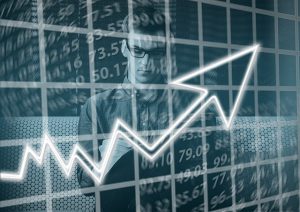How to do Fundamental Market Analysis

Fundamental analysis is the concept of analysing currencies by looking at the overall economy and news. Unlike technical analysis, fundamental analysis does not focus on chart patterns of an asset. Instead, it looks at the bigger picture of the economy and how it will impact the demand for a currency. For example, the demand of a currency could increase if the economy does well.
Background of Fundamental Analysis
The best way to look at this is to use an example of two countries. The economy of country A is firing on all cylinders. The unemployment rate is at a historic low, the manufacturing sector is booming, inflation is well-contained, and retail sales are improving. Country B is the opposite. The unemployment rate is rising, retail sales are shrinking, and inflation is out of control. Given the two countries, which one would you invest in? Which currency would you prefer to own? The logical currency to own is that of country A.
In fundamental analysis, your goal is to look at the underlying market data and news and concluding with the best currency to own.
Key Fundamental Information to Look at
There are two primary things to look at in fundamental analysis. First, you need to look at the news of the day. News is very important because it can influence the demand and supply of a currency.
A good example of this is what happened in June 2016. On this day, the United Kingdom voted in support of Brexit. The result was unexpected because many polls were in favour of the remain side. When the results were announced, the sterling declined as shown below. It dropped because traders started to worry about the future of the country.

Another example of news is what happened in January 2015, when the Swiss National Bank removed the franc’s peg on the euro. This news led to a sharp decline of the EUR/CHF pair as shown below.

Other than news, you need to look at the economic data. This is data that is released by various government and private sector organisations to provide a picture of the economy. The data can give you a good picture of whether the economy is doing well or not.
As a trader, you can find this data on the economic calendar. An economic calendar is a tool that is provided by many organisations to display economic data. You can find our economic calendar on this link.

As you can see above, the economic calendar has a number of parts. On the left side, you will see the time the data will be released. This is followed by the currency to be affected and the data that will be released. Next, there is the priority, which is then followed by the period of the data. This is then followed by actual, forecast and previous.
All of these columns are very important. The priority tab tells you whether the data to be released is important or whether it will move the underlying currency. For example, data like the coincident index is not followed closely. It will not move the currency when it is released. The estimates and previous numbers are important because they show you the trend.
Important Data to Watch
Not all data in the economic calendar is important. Therefore, traders focus on several types of economic data. Some of the key numbers to watch are:
Employment numbers
A strong economy is one that has a low unemployment rate, strong wage growth, and more people in employment. The most important jobs numbers in forex are those from the United States. They are released on the first Friday of the month. The US dollar will likely fall if the data shows an increase of unemployment rate and job losses.
Inflation
Inflation measures the rise or fall of prices in a country. An increase in inflation is usually a negative thing for the economy. Similarly, deflation or stagflation are viewed as negative for the economy. In the economic calendar, inflation is usually measured by the consumer price index (CPI), producer price index (PPI), persona spending and income, and house price index.
Manufacturing PMI
The manufacturing sector is very important in the economy because it creates jobs and brings foreign exchange. The manufacturing PMI measures the activity of purchasing managers in the manufacturing sector. A figure higher than 50 is usually a signal of expansion while a figure below 50 is a sign of contraction.
Retail sales
The retail sector is the most important part of any economy because of the number of people it employs. An increase in retail sales shows that the economy is strong.
Other Important Data
Other important data in the economic calendar are machine sales, housing starts, building permits, consumer and business confidence, trade, and GDP.
Interest Rates
Everything in the economic calendar usually points to interest rates, which are usually set by central banks. The Federal Reserve, European Central Bank, and Bank of Japan are the most important central banks in the world.
Generally, central banks hike interest rates when an economy is firing on all cylinders. The reason for this is to reduce the pace of growth to prevent a hard-landing. Therefore, if a country continues to release very positive economic data, it raises the likelihood of rate increases. A rate increase is usually positive for the base currency.
On the other hand, negative data in the calendar usually point to a rate cut. The goal of a rate cut is to make money more affordable to people and businesses. This, in turn, promotes spending and boosts the economy. A rate cut is viewed as being negative for the base currency.
Summary
Fundamental analysis is an important analysis method. It is not very difficult to understand. However, using this data the wrong way can be dangerous. For example, it would be dangerous to buy the USD on very positive jobs numbers if you have not looked at the bigger picture. Therefore, we recommend that you take time to study about these numbers and how to use them in the market.
Share this post:
